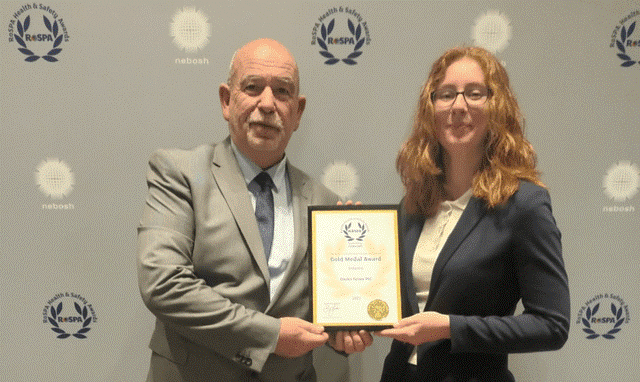Harshida Acharya, Co-Founder of Ladies Who Logistic, examines the pivotal role women can play in supporting each other, fostering greater representation, diversity and inclusivity within supply chains
According to a recent survey conducted by Gartner Inc., women’s progress within supply chains is notably remarkable, especially at the C-suite and executive levels.
In fact, as of 2023, an all-time high of 26% of C-suite and executive roles (including Chief Supply Chain Officers, Senior Vice Presidents, Executive Vice Presidents and Chief Procurement Officers) are now occupied by women—a substantial increase from the 19% reported in 2022. While this progress is undeniably significant, there remains ample room for further advancement and transformation.
This feature embarks on a journey to explore the transformative power of inclusive networks in supply chain management. It also examines the pivotal role women can play in supporting each other, ultimately fostering greater representation, diversity, and inclusivity within the supply chain field.
Key Takeaways
Building Inclusive Networks: Uncover the essential steps and best practices for establishing inclusive networks that create a safe and supportive platform for women in supply chain. Learn how these networks facilitate connection, collaboration, and thriving in an industry that is often male dominated.
Supporting Each Other: Delve into real-world examples of women within the supply chain who are actively offering mentorship, guidance, and encouragement to their fellow professionals. Explore the tangible benefits that arise when women support one another, fostering a sense of camaraderie and empowerment in the industry.
Building Your Own Path: Discover strategies and insights on how women can make their voices heard and navigate their unique paths to success within the supply chain sector. Learn how to construct your own “board of advisors” that can provide valuable guidance and mentorship throughout your career journey.
In recent years, the supply chain industry has faced its fair share of challenges, from global disruptions to shifting market demands. Yet, one of the most pressing issues remains the underrepresentation of women.
The Gartner/AWESOME 2023 Women in Supply Chain Survey presents a revealing snapshot: women are carving out space in this traditionally male dominated field, with 41% representing the total workforce.
For the first time, women hold 26% of C-suite and executive roles in supply chains—a remarkable leap from just 19% the previous year. The reasons behind this uptick are multifaceted, involving proactive recruitment, retention efforts and an increased focus on gender diversity as a business imperative.
However, the celebration is tempered by the knowledge that progress is uneven and more work lies ahead. Hurdles remain that prevent many from entering or advancing as they might hope. This is clearly visible as we climb the corporate ladder and the representation of women dwindles – a stark reminder of the barriers that still exist.
Unpacking the Complex Challenges Faced by Women in Supply Chain
The journey toward achieving gender diversity in the supply chain industry is fraught with a multitude of systemic barriers, each requiring a unique strategy to overcome. These challenges are not monolithic but vary widely across different levels and aspects of the sector, highlighting the need for a comprehensive approach to foster a more inclusive environment.
Career Progression and Professional Development
Lack of Clear Advancement Pathways: The lack of transparent and well-defined routes to leadership roles is a significant barrier for women in the supply chain. Without clear guidance, women are left to navigate their career paths without a clear map, often missing out on opportunities for advancement.
Unconscious Bias and Stereotyping: Persistent biases and stereotypes question women’s leadership abilities and potential, casting doubts over their career trajectories. These biases result in women being overlooked for promotions and high-impact roles, limiting their progression in the industry.
Networking Gaps: Being outside the core professional networks that facilitate career advancement leaves many women at a disadvantage. Without access to mentorship, sponsorship, and insider knowledge, women struggle to climb the corporate ladder.
Compensation and Financial Equity
The Stubborn Pay Gap: The enduring gender pay gap, with women earning 87 cents for every dollar earned by men in equivalent positions, undermines women’s financial well-being and career satisfaction. This discrepancy not only affects their immediate financial health but also their long-term career retention and growth in the sector.
Lack of Transparency: The absence of transparency in compensation practices hampers women’s ability to negotiate fair pay. Without clear information on pay scales and benchmarks, women are left in the dark about their worth and potential earnings.
Work Environment and Cultural Norms
Work-Life Imbalance: The expectation for women to primarily manage domestic responsibilities impacts their availability and opportunities in the supply chain sector. Industries requiring long hours and offering little flexibility exacerbate this imbalance, making it difficult for women to sustain their careers.
Pressures From Working Remotely: Remote work has intensified work-life balance challenges, with many women shouldering the dual burden of full-time work and caregiving.
Lack of Supportive Policies: The slow adoption of policies that support work-life balance, such as flexible working arrangements and parental leave, creates additional hurdles for women in maintaining a balance between professional and personal responsibilities.
Societal Expectations and Cultural Shifts
Gendered Expectations: Deep-rooted societal norms about gender roles steer women away from sectors like the supply chain from a young age. These cultural expectations limit women’s career choices and perpetuate the gender disparity in the industry.
Resistance to Change: The industry’s reluctance to embrace cultural shifts towards gender diversity manifests in various ways, undermining efforts to promote inclusivity. This resistance, whether through dismissive attitudes or a lack of investment in diversity programs, hinders progress toward a more equitable workplace.
Strategies for Increasing Women’s Representation
Overcoming the gender disparity within the supply chain industry necessitates a comprehensive and strategic approach from both organisational and individual perspectives.
Achieving a more gender-diverse workforce is not merely about filling quotas but fostering an environment where women can thrive, lead, and innovate. This transformation is underpinned by targeted strategies aimed at dismantling systemic barriers and empowering women to navigate and shape the industry.
Organisational Strategies for Enhancing Gender Diversity
Cultivating Professional Growth and Development
To mitigate the advancement barriers women face, organisations must implement robust training and mentorship programs tailored to their professional development needs. This initiative involves several key components:
Targeted Mentorship: Pairing emerging female talents with seasoned leaders for guidance, advice, and advocacy. These mentorship relationships can bridge the gap between potential and opportunity, offering women a clearer pathway to leadership roles.
Comprehensive Training Programs: Developing skills-based training that addresses both the technical and leadership competencies needed to excel in the supply chain sector. Special emphasis should be placed on areas where women are traditionally underrepresented.
Career Pathing Guidance: Providing clear and actionable career progression plans that detail the steps, qualifications, and experiences required to ascend to higher positions. Transparency in career pathing can demystify the process of advancement, making leadership roles more accessible to women.
Bridging the Compensation Gap
Addressing wage disparities is crucial for retaining and attracting female talent in the supply chain industry. Organisations must undertake a thorough review of their compensation structures to ensure fairness and competitiveness.
Pay Equity Audits: Conducting regular audits to identify and rectify gender-based pay disparities. These audits should be transparent, with findings and subsequent actions communicated openly to all employees.
Competitive Compensation Packages: Benchmarking compensation against industry standards to ensure that pay scales are competitive and equitable. This includes not only base salary but also bonuses, benefits, and other forms of remuneration.
Transparent Salary Ranges: Implementing transparent salary range disclosures for all roles. This transparency can empower women to negotiate salaries more effectively and ensure fair compensation.
Championing Diversity, Equity, and Inclusion Initiatives
Developing a culture that values and promotes diversity is essential for creating an inclusive environment where women can flourish. Key actions include:
Establishing DE&I Goals: Setting clear and measurable objectives for gender diversity within the organisation. These goals should be integrated into the broader strategic framework of the company, with regular progress reviews.
Launching Supportive Initiatives: Initiatives such as employee resource groups (ERGs) for women, diversity training programs, and policies that support work-life balance can significantly impact women’s experiences in the workplace.
Inclusive Recruitment Practices: Revising recruitment and hiring practices to eliminate biases and widen the talent pool. This includes using gender-neutral language in job descriptions, diversifying recruitment channels, and implementing structured interviews.
Individual Actions for Empowerment and Change
While organisational strategies lay the foundation for a more inclusive industry, individual actions by women within the supply chain are equally crucial in driving change:
Building Self-Confidence and Assertiveness
Empowerment often begins with self-belief. Women can take several steps to enhance their confidence and assertiveness in the workplace:
Assertive Communication: Practicing clear and confident communication can help women articulate their ideas, contributions, and career aspirations more effectively.
Self-Advocacy: Actively seeking opportunities for advancement, such as promotions or high-visibility projects, and not shying away from negotiating salaries or roles.
Taking Ownership of Career Development
Proactive career planning is essential for navigating the complex supply chain industry:
Goal Setting: Clearly defining career objectives and mapping out a strategy to achieve them. This includes identifying skill gaps and seeking opportunities for professional development.
Continuous Learning: Pursuing additional education, certifications, or training relevant to the supply chain field. Staying abreast of industry trends and technologies can enhance one’s value and versatility within the organisation.
Cultivating a Supportive Network
A robust professional network can serve as a powerful tool for career advancement:
Mentorship and Sponsorship: Seeking out mentors and sponsors who can provide guidance, open doors to opportunities, and advocate on one’s behalf. Creating a personal “board of advisors”—a group of trusted individuals to provide guidance and feedback— is invaluable.
Peer Support: Engaging with peers, joining professional associations, and participating in industry events can broaden one’s network and expose them to new perspectives and opportunities.
Championing Others
Women in leadership positions have a unique opportunity to support and elevate other women within the industry.
Mentoring Emerging Talent: Sharing knowledge, experiences, and insights with junior colleagues can help them navigate their careers more effectively.
Advocacy: Using one’s position to advocate for more inclusive policies, practices, and cultures within the organisation. This includes championing the work and contributions of female colleagues to ensure they receive recognition and opportunities for advancement.
Conclusion
The journey toward gender diversity within the supply chain industry is an ongoing battle, marked by both achievements and setbacks. While the Gartner/AWESOME 2023 Women in Supply Chain Survey highlights significant progress, such as the increase in women holding C-suite and executive roles, it also casts a spotlight on the broader challenges that persist.
These challenges, ranging from opaque career pathways and systemic biases to financial inequities and the balancing act between work and life, underscore the complex landscape women navigate in this traditionally male-dominated field.
Addressing these issues demands a dual approach, blending organisational commitment with individual initiative. Companies must not only pledge to create transparent, equitable environments but also follow through by implementing concrete strategies that support women’s professional development, ensure fair compensation, and foster an inclusive culture.
Meanwhile, women within the industry should assert their presence by advocating for themselves, seeking out-growth opportunities, building supportive networks, and aiding in the development of the next generation of female leaders.
Let this be a moment of reflection. Let it be the point where we collectively decide to upend the status quo and embrace a future where diversity isn’t an aspiration but a defining characteristic of the supply chain industry.
The path ahead is fraught with challenges, but it’s a path we must tread with conviction and courage. The future of our industry—and the generations of women who will shape it—depends on the actions we take today.
Read more news and exclusive features in our latest issue here.
Never miss a story… Follow us on:
International Trade Magazine
@itm_magazine
@intrademagazine
Media Contact
Joseph Clarke
Editor, International Trade Magazine
Tel: +44 (0) 1622 823 920
Email: editor@intrademagazine.com





